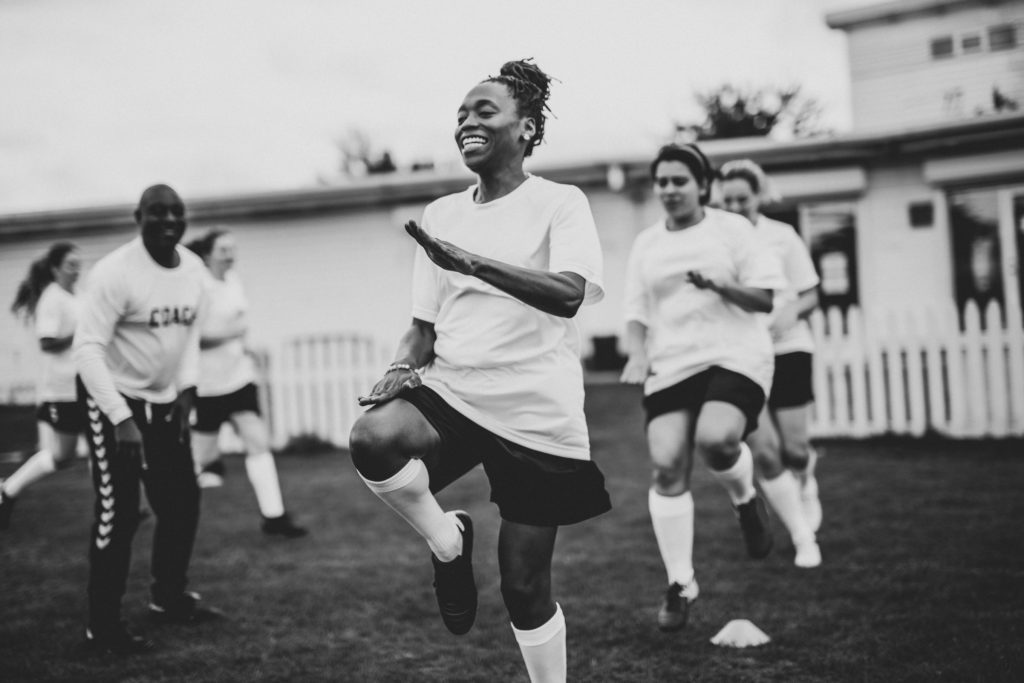Last Updated on: 11th October 2024, 03:02 pm
November 1st was the 50th anniversary of the formation of the Women’s Football Association. Originally called the Ladies Football Association of Great Britain, the WFA had to fight to become official. Many countries banned women’s football because it was considered an inappropriate past-time for them. In the UK, the FA banned women from playing on official pitches between 1921 and 1971. Germany lifted a similar ban in 1970. The US passed a law in 1972 that banned organisations that received government funding from discriminating based on sex. Meaning universities had to spend as much on women’s sport as on men’s sport. This was the start of the rise of women’s football in America.
Increased Numbers In Women’s Football
Women’s football has been gaining popularity for a few years now but it was this summer’s Women’s World Cup that has had a massive impact on the game. Not only did we a record number of people watching but it has also inspired many people to take up football. In fact, there were around 605 new girl’s youth teams registering for the 19/20 season, which brings the total up to 2,766 in Britain. On top of that, there have been 260 new women’s clubs registered for the current season. According to the FA’s participation tracker, in June 2019 2.6 million women aged over 16 said they play football. That’s the highest number for female participation ever recorded for the sport. Since the world cup, more 850,000 more women have committed to playing. More women than ever are putting on their football kits this season.
It’s pretty clear that the spotlight on women’s football in general, particularly the World Cup, has been the main reason for such an increase. The Lionesses came fourth in the tournament after they lost to the eventual winners. 11 million people tuned in to watch the semi-final, which made it the most-watched television event of the year.
More Money Means Better Quality
Funding for women’s football has increased over the last few years and has meant that a professional career is becoming more viable. A common criticism surrounding women’s football is that you don’t get the same quality of football as you would watching men’s teams. That’s all changed. There are some fantastic female players at all levels and, as seen in the World Cup, it is something that can stand up with men’s football. There are ups and downs. Following Thailand’s 13-0 defeat, there will have been plenty of people who saw it as proof that men’s football is superior. However, there are bad moments in all sports. All teams and players have their off-days.
And to say that is to deny all of the great skills that were on show throughout the tournament. Australia’s 3-2 comeback against Brazil was a memorable match full of quality playing. France, the US, and England were all seen playing excellent football throughout the tournament. It just goes to show that an increased interest in the sport, which leads to additional funds, has a positive effect on the quality of the games. It is also giving young girls and women the sporting heroes they need to motivate them to get involved.
Getting Young Girls Active
According to Kate Dale, leader of the This Girl Can campaign, football has been an important part in motivating girls to play sport. Seeing more professional women’s games being televised, “sends out a loud and clear message that football, and sport and physical activity in general, is for everyone.” The focus on the Women’s World Cup has given girls their representation in the sport and has inspired many to start playing. The more common women’s football becomes on our screens, the more they will feel that they also belong on the pitch.
Young Women Get Involved
It’s not just young girls putting on their football kit. The FA has also seen a record number of 16 to 24-year-olds playing some form of football. Samantha Brown, the development officer at the Amateur Football Alliance, has noticed an increased interest from young women. Something she attributes to the Women’s World Cup. “That quality of the matches throughout, particularly England Women, has shown the technical ability of the players and the competitiveness of the game.” It certainly seems to have inspired some older women to get back into the game or try it out for the first time.
Not Finished Yet
All of these statistics are great, obviously, but we’re still not in a position to be celebrating. Of the 2.6 million women who said they play football, 2 million of them play casually and not in a league. So, what do we need to do to get women playing competitively? One of the long-term strategies would be getting young girls involved in competitive football. It’s easy to suggest young girls have other cares but the statistics prove there is an interest in the sport. Schools and amateur teams need to encourage girls to come down and play. Coaches and managers should be asking “what can I do to get girls interested in sports and keep them interested?”
We also need to continue to celebrate female players and teams. There are plenty of women and girls who regularly watch their team. However, there is still a barrier between being a fan and being a player. For so long, football heroes have all been men. So, it’s a step in the right direction that strong female players are being recognised. As younger people see more women on the pitch, the idea that football is a boy’s sport will disappear.
According to the chief executive of Powerleague, Christian Rose, the participation by female football players has doubled in the last year. According to Rose, many women were uncomfortable with the idea of playing because of the possible reaction. “Women’s attitude to playing was one of concern, that if they turned up, they could be leered at, laughed at, or ridiculed.” Even though it might not be intended, there is still a sense that women don’t belong on the football pitch. This is why coverage of women’s football is so important. We need to normalise it and shift the atmosphere towards openness and equality. And there are signs that it is already working.
Find Out More
Check out our Fun Facts About Women’s Football to find out more about the sport and, maybe, learn something new. Or, check out our range of football kits to get you ready for your first match.






